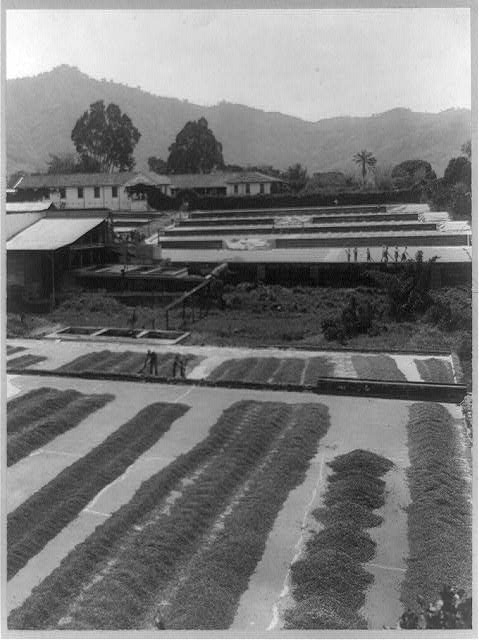
Within this photo you can see rows of coffee beans drying in the sun. In the distance, a few workers stand holding tools. According to John Charles Chasteen in Born in Blood and Fire, 4e, “Coffee boomed in the tropics” (197). This included Costa Rica, where coffee became a heavy export, particularly after nations had begun casting off the shackles of colonial powers.
It is interesting to consider the motivation behind the picture we see. Why would someone take a picture of a simple coffee plantation? Was it so that students over 130 years later could analyze the picture’s relation to the greater Latin American history of the time period? I doubt it. One theory is that the people with access to expensive photography at this time, the upper class, perhaps had incentives to share evidence of their lucrative coffee business. Maybe they were trying to lure more European investors to expand the Coffee business in the area by displaying the booming exports. The truth is that the motives behind the picture are likely lost to speculation.
It is important to note the role of the coffee boom in Costa Rica with the socioeconomic hierarchy. According to Chasteen, “[Coffee] contributed to the growth of a rural middle class in highland areas of… Costa Rica” (198). According to the document headline on the Library of Congress website, this picture is of a “Coffee hacienda”, therefore the workers on this coffee plantation were not enslaved but rather were working for themselves in some fashion. The incentives in place for them to expand and grow the coffee exports (likely not many) must’ve contributed to a rise in rural peoples income and therefore, a rise in economic class. During the Neocolonial period of Latin American history the socioeconomic hierarchy was beginning to change, and this photograph ties into the first shifts of this soon to arrive new order Nationalism.
Referenced Sources:
Chasteen, John Charles. Born in Blood and Fire. 4th ed. New York City, New York: W.W. Norton and Company, 2018.
Primary Sources:
Coffee hacienda, Costa Rica. Costa Rica, None. [Between 1890 and 1923] Photograph. https://www.loc.gov/item/89713946/
